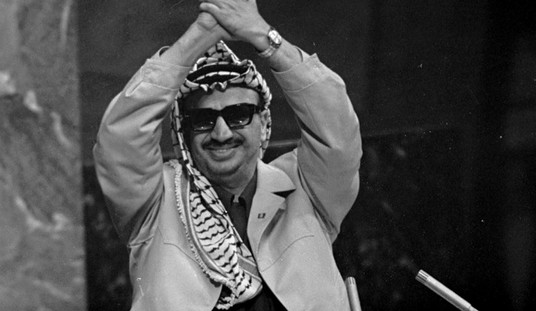On Friday before the Labor Day holiday, the third edition of the Islamic State’s glossy English-language magazine hit the Internet.
It’s called Dabiq, named after a small town in Syria where the Islamic State believes that the final battle for the world will begin. The third edition is titled A Call to Hijrah — “hijrah” means “the path to jihad.”
As we reported Friday, the magazine includes a lengthy statement said to be from James Foley, whom IS had beheaded in the days before A Call to Hijrah was released. It also calls President Barack Obama an “apostate,” which according to Islamic law marks him for death. IS may believe that Obama is a Muslim apostate because his father and grandfather were Muslims, or because he was educated in an Islamic school as a child in Indonesia, or both, and now states that he is a Christian.
In its opening chapters, Dabiq stakes the Islamic State’s claim that it is unique in all of history.
That is from page four, which includes an undated photo of IS leader Abu Bakr al-Baghdadi. He is probably the “unknown man” that the text above refers to, because until the rise of the Islamic State he has not been the worldwide known figure that Osama bin Laden was for al Qaeda until his death.
Dabiq states if one were to travel to the Islamic State’s units on the front-lines in Syria and Iraq, they would see that the “soldiers and commanders [are] of different colors, languages and lands: the Najdi, the Jordanian, the Tunisian, the Egyptian, the Somali, the Turk, the Albanian, the Chechen, the Indonesian, the Russian, the European, the American, and so on. They left their families and their lands to renew the state of the muwahhidin in Sham, and they had never known each other until they arrived in Sham!”
The author goes on to state: “I have no doubt that this state…has become the largest collection of muhajirin in the world, is a marvel of history that has only come about to pave the way for al-Malhamah al-Kubra (the grand battle prior to the Hour).”
Part 2 of Dabiq, which begins on page 6, continues in this vein, extolling its jihadists. It connects Ibn Masud, who lived in the time of Mohammed, to al Qaeda in Iraq leader Abu Musab al-Zarqawi, who also praised foreign fighters who joined the al Qaeda cause in Iraq. Part 2 endeavors to put the Islamic State squarely into Islamic history, in the mainstream, as inheritors of the mantle left by Mohammed himself and carried out by Zarqawi and now al-Baghdadi.
As a propaganda and recruitment tool, Dabiq is impressive. It is well-produced and takes the time to explain many Islamic concepts that even Muslims who grew up in the West might not be familiar with. The magazine’s characterization of the Islamic State as a multi-national and multi-ethnic melting pot, coupled with photos of smiling IS warriors, is an overt pitch to westerners who have been steeped in multiculturalism in schools and media for decades. IS is pitching itself as the joyous fulfillment of the West’s ideal to bring all races, nationalities and cultures together to live side-by-side in harmony.
The Islamic State’s harmony depends not on voluntary assimilation and tolerance, but on exterminating everyone and everything that it deems haram — sinful.
Dabiq: A Call to Hijrah is embedded on the next page.











Join the conversation as a VIP Member